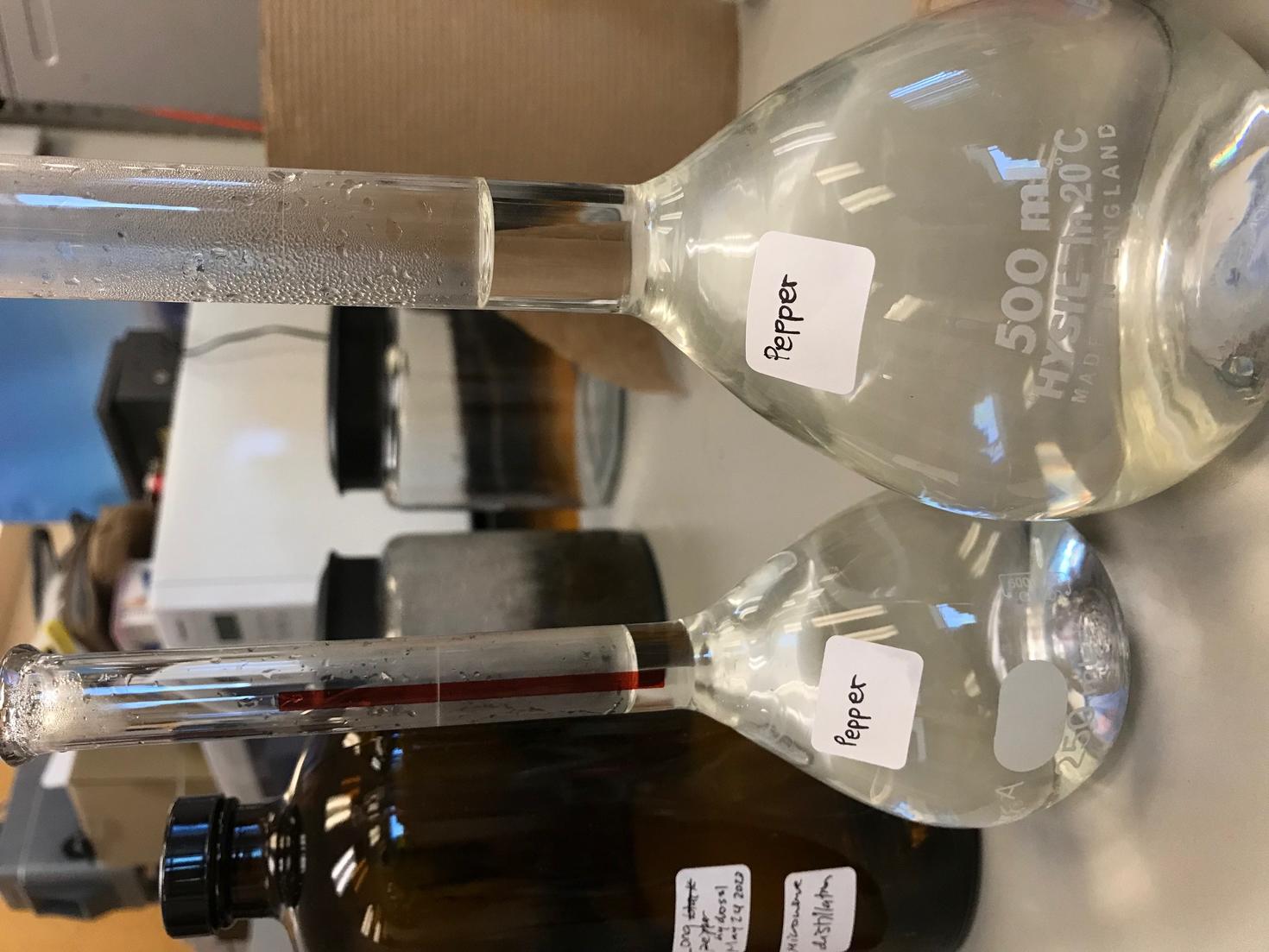
Long Pepper Hydrosol
Piper longum
Long pepper is a spice native to South Asia that is closely related to the plant that bears black, white and green pepper, Piper nigrum. Its name in Sanskrit, pippali, is the etymological root for the English word pepper. Long pepper has been used in Ayurvedic medicine for thousands of years.

Long Pepper Hydrosol Distillation and Analysis
Long pepper was popular in Ancient Greece and Rome as well as South Asia, but it has faded into obscurity in modern Western cooking. It is still in use today in Indian, Malay, Nepalese and North African cuisine and is featured in Nihari, the national dish of Pakistan. [1] Interestingly, long pepper has a long history in Ayurvedic medicine as a remedy for gastrointestinal issues, lung problems, and inflammation. [2]
- Atlas Obscura. Long Pepper. https://www.atlasobscura.com/foods/long-pepper (accessed June 8, 2023).
- Lee, W.; Yoo, H.; Kim, J. A.; Lee, S.; Jee, J.-G.; Lee, M. Y.; Lee, Y.-M.; Bae, J.-S. Barrier Protective Effects of Piperlonguminine in LPS-Induced Inflammation in Vitro and in Vivo. Food and Chemical Toxicology 2013, 58 (58), 149–157. https://doi.org/10.1016/j.fct.2013.04.027.
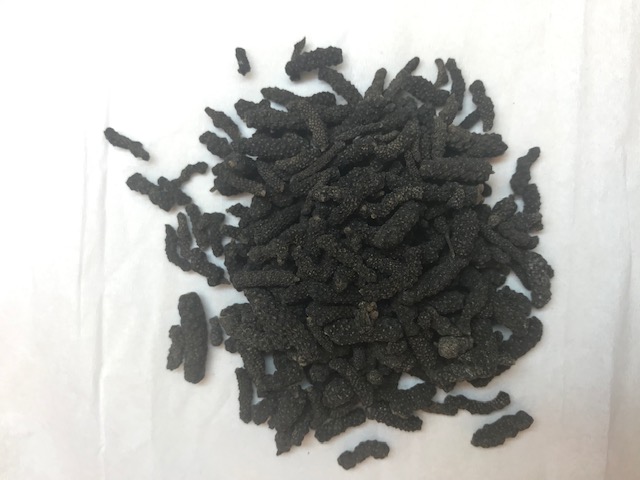
The long pepper hydrosol was created by microwave distillation. 300 g of pepper was ground into a fine powder, soaked overnight in distilled water and then microwaved in three bursts of nine minutes in a glass vessel containing a 200 mL ice cone of deionized water that was collected in a 400 mL beaker. The cone was fully melted in each microwave burst and then replaced before the next one. The microwave distillation heats the pepper/water mixture so that volatile compounds in the plant boil off and then re-condense along the ice cone to be collected into the beaker placed in the middle of the jar. Additional water was added to the pepper mixture between microwave bursts to ensure the pepper mixture did not dry out completely, which would hinder the extraction process and possibly burn the pepper. Approximately 600 mL of hydrosol was collected and no oil was observed.
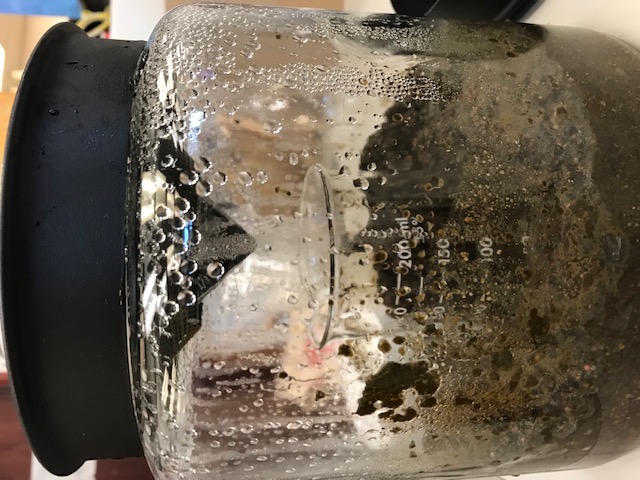
Analysis of the long pepper hydrosol was conducted via GC-MS using a DB-5 MS column. 1 mL of the hydrosol was first run through a solid phase extraction (SPE) process to remove water from the sample and replace it with an organic solvent so analysis could be performed on a non-polar GC column. A test run found that while there were a handful of compounds present in the long pepper hydrosol, all except one could be found in very low concentrations. A calibration curve was created using the internal standard 4-ethyl guaiacol, which has similar properties to the molecules of interest in the hydrosol - mainly terpenoids. To quantify the least abundant compounds, a separate, more concentrated sample was run (5 mL of hydrosol through the SPE).
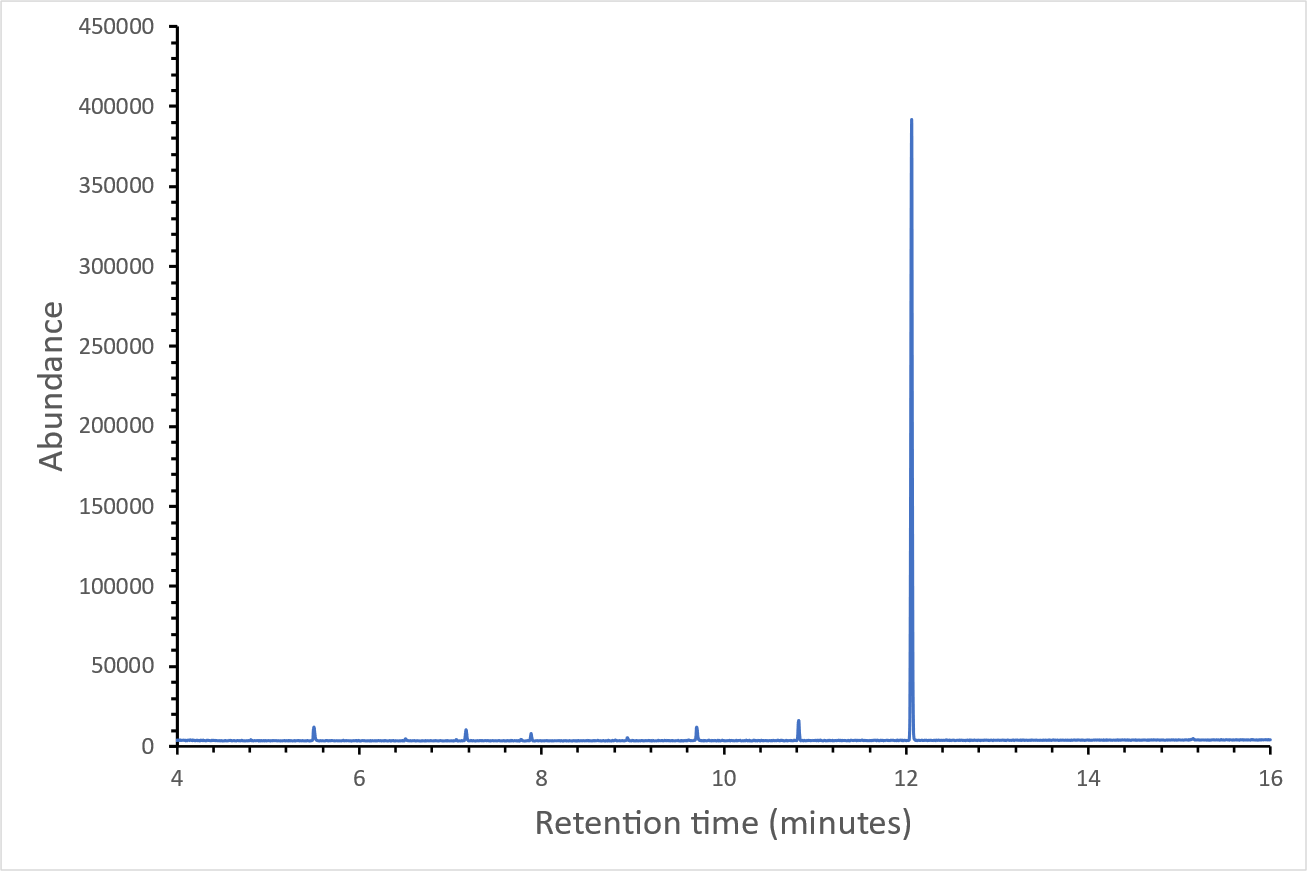
Data analysis found that the most abundant compound in long pepper by an order of magnitude is elemicin. Elemicin is an oxygen-containing aromatic compound that is found in many different plants, including nutmeg and mace. It is a bioactive compound, possessing antimicrobial, antioxidant and antiviral properties as well as acting as an anticholinergic and a deliriant. [3] Its structure is very similar to myristicin, another aromatic compound found in nutmeg and mace with similar bioactivity; it also resembles the structure of piperine, which is a nitrogen-containing organic compound known to be found in long pepper as well as black pepper. Due to its bioactivity and antimicrobial activity, elemicin has been investigated for possible use in food preservatives and therapeutic agents. [4]
3. Shulgin, A.T.; Sargent, T.; Naranjo, C. The chemistry and psychopharmacology of nutmeg and of several related phenylisopropylamines. Psychopharmacol. Bull. 1967, 4 (3), 13–20.
4. Al-Qahtani, W. H.; Dinakarkumar, Y.; Selvaraj, A. Phyto-chemical and biological activity of Myristica fragrans, an ayurvedic medicinal plant in Southern India and its ingredient analysis. Saudi Journal of Biological Sciences. 2022, 5 (29), 3815-3821.
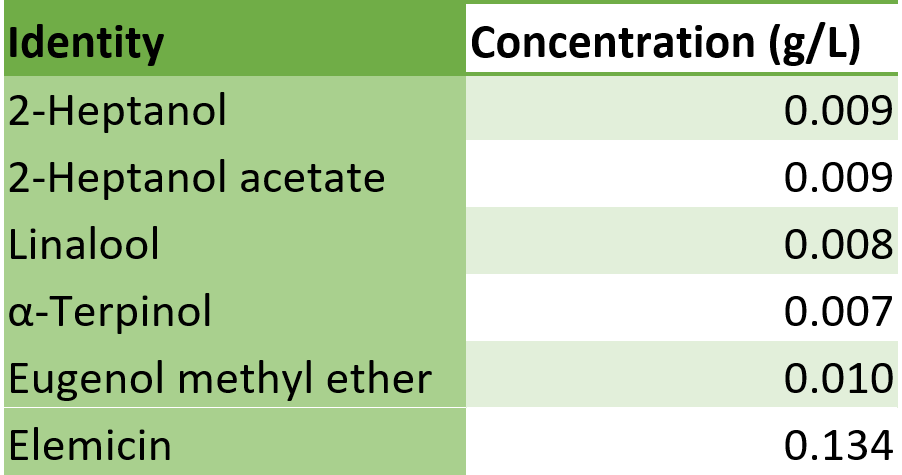
My name is Kiran Nandi (she/her) and I’m a fourth year student in the BSc. Chemistry program specializing in Eco-Chemistry. I’m super excited to be doing my honour’s project with Dr. Curtis at the JLH facility so I can learn more about mass spectrometry and analytical chemistry! I love being outside, am very enthusiastic about environmental justice and have always been intrigued by plants and flowers, so the botany aspect of this project really interests me. I am studying the chemical components of different kinds of pepper, including long pepper, black pepper, chili pepper and Szechuan pepper.
